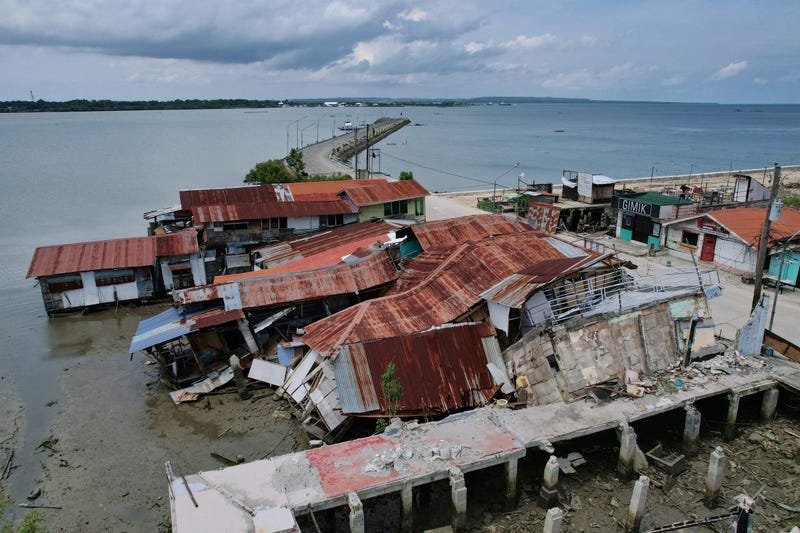
MANILA, Philippines (AP) — Typhoon Matmo weakened into a storm after barreling Friday across Philippines' mountainous north, where thousands were evacuated, in the latest emergency for a country still dealing with a deadly earthquake and two recent storms.
Matmo blew into the South China Sea before nightfall with sustained winds of up to 110 kilometers (68miles) and gusts of up 165 kph (102 mph) after crossing a vast agricultural valley and mountainous provinces, where floods were reported, officials said. It made landfall in northeastern Isabela province Friday morning.
There was no immediate reports of casualties but the country's weather agency warned that the fast-moving storm remained dangerous and could still generate “life-threatening" tidal surges of up to 3 meters (10 feet) and more downpours as it intensifies seasonal monsoon rains.
Matmo could strengthen back into a typhoon as it crosses over the sea toward southern China, forecaster said.
More than 8,000 villagers were evacuated and power outages were reported in Isabela and the nearby province of Aurora, officials said.
Schools suspended classes, and cargo and fishing vessels were prohibited from entering the rough seas along the path of the storm.
Hong Kong’s observatory said Matmo would pass by the territory on an expected path toward Hainan Island and mainland China's Guangdong province over the weekend.
Matmo, locally known as Paolo, was the 16th tropical cyclone to hit the Philippines this year. The Southeast Asian archipelago nation is lashed by about 20 typhoons and storms a year and lies on the seismically active Pacific “Ring of Fire,” making it one of the countries most prone to natural disasters.
It did not directly affect the central province of Cebu further south where a 6.9-magnitude earthquake Tuesday night killed at least 68 people and injured more than 550 others, many in the coastal city of Bogo, which was hit hard along with outlying towns.
More than 5,000 houses were damaged, and some residents were staying in parks, grassy clearings and on sidewalks despite sporadic rain because aftershocks left them too fearful to return to their homes.
“We can’t blame people if they refuse to return home ... there were too many aftershocks and some were really strong,” Public Works Secretary Vivencio Dizon said in a news conference in Manila. “They don’t want to go anywhere with a roof."
About 1,000 tents would be set up with the help of the Red Cross in Bogo and outlying towns starting Saturday for thousands of residents, Dizon said.
An earlier storm, Bualoi, caused at least 37 deaths and displaced thousands in the Philippines last week before hitting Vietnam, where 49 people died and economic damages were estimated at $485 million.
Super Typhoon Ragasa, which at its peak was the world's strongest tropical cyclone of the year, caused several deaths in the Philippines as it passed by the country before landfall in southern China.
___
Associated Press journalists Aaron Favila and Joeal Calupitan in Bogo, Philippines, Aniruddha Ghosal in Hanoi, Vietnam, and Kanis Leung in Hong Kong contributed to this report.